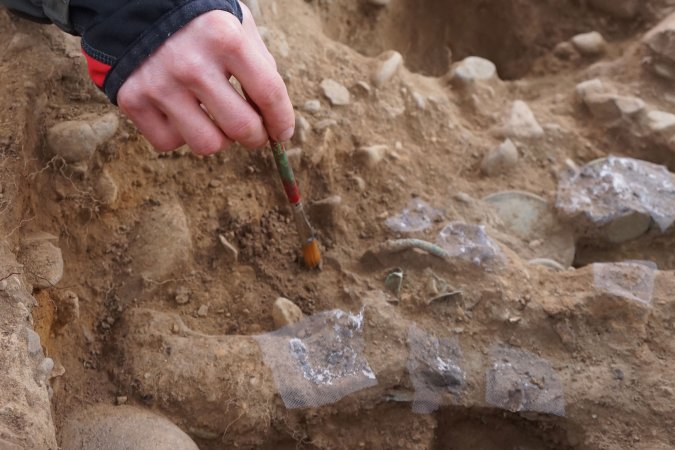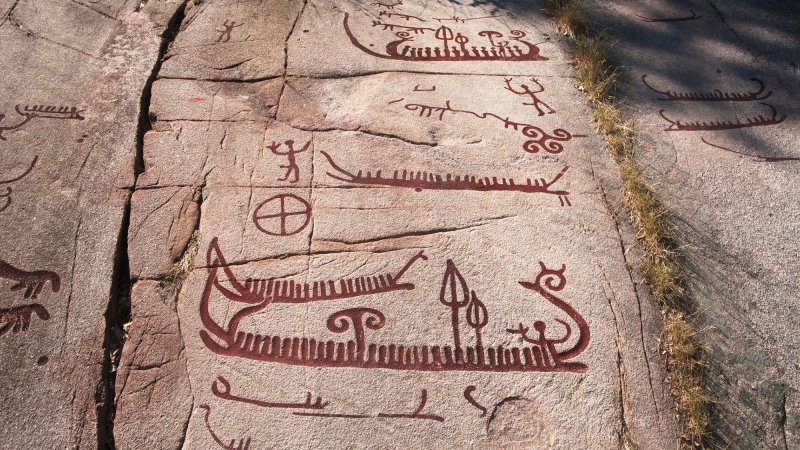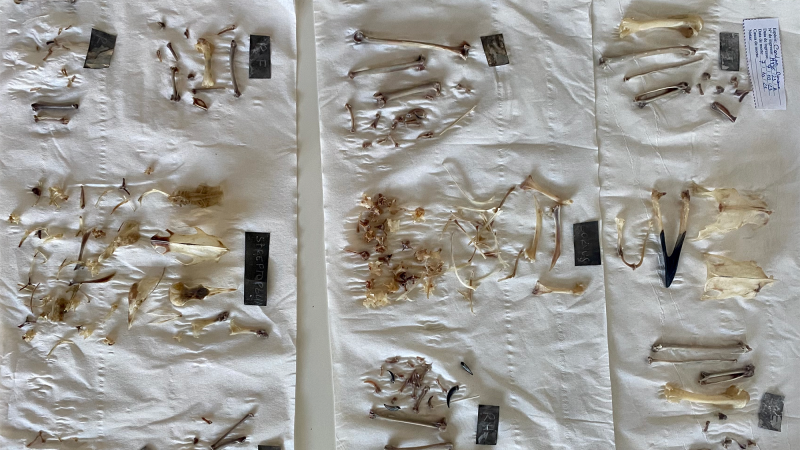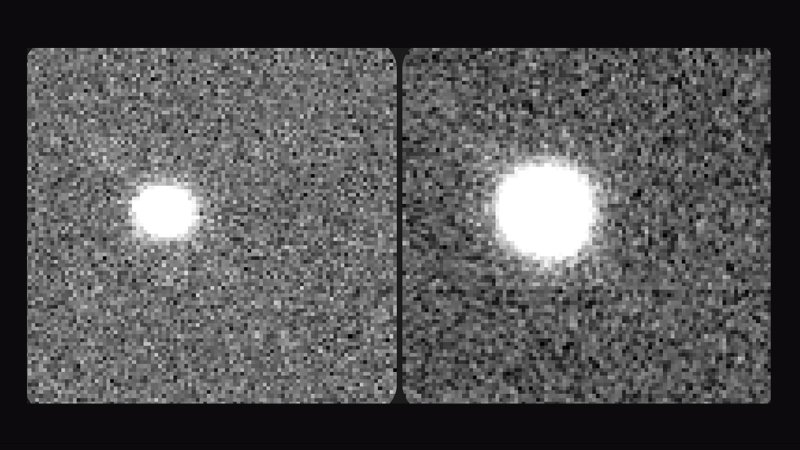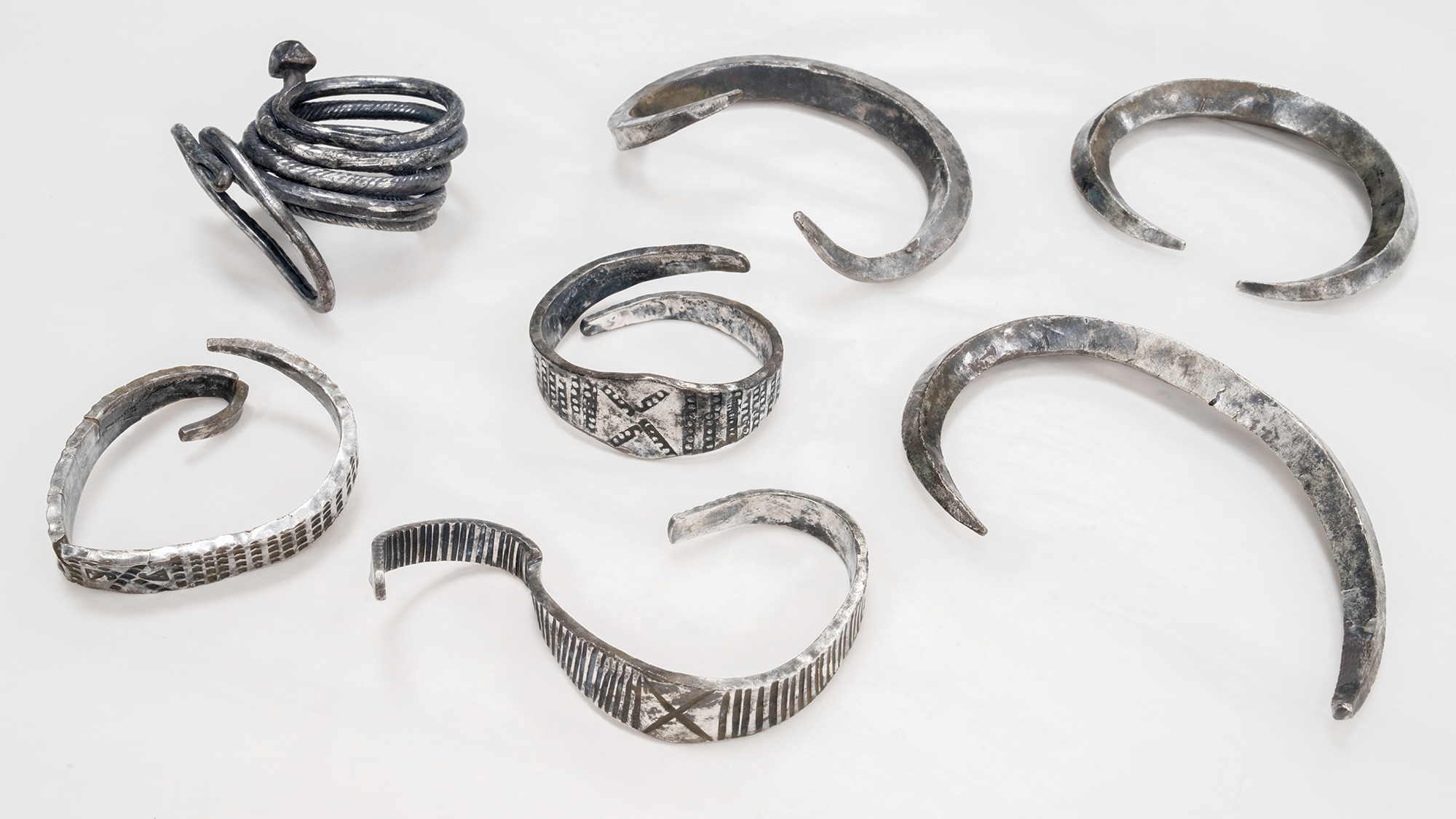

While walking with a metal detector this spring, 22-year-old archeology student Gustav Bruunsgaard uncovered a hoard of silver that dates back to the Viking Age. The sparkly find has links to the British Isles, Ukraine, and Russia.
According to a translated statement from the Moesgaard Museum in Højbjerg, Denmark, the student from Denmark’s Aarhus University was walking in a field in Elsted, north of Aarhus. When the metal detector beeped loudly, Bruunsgaard grabbed a small shovel and uncovered a small silver bangle. He returned to the site a few days later and found six more bangles. Assessment from both Danish and international experts revealed that they date back to the early Viking Age (about 793 to 1066 CE), shortly after the foundation of the Viking Age city of Aarhus or Aros. Experts believe that it was made in Southern Scandinavia, likely Denmark.
[Related: Even Vikings had to pay fines.]
Vikings had a fairly complex economic system. Recently, a new interpretation of an inscription on the Swedish Forsa Ring gave economic historians some new insights into how money and debts were handled at this time. Some of these hefty sums could be up to $9,610 today, but it is not clear what offense the fines covered.
During the Viking Age, silver like the rings uncovered in Elsted was a measure of value. The metal was a way to make payments and a type of collateral that demonstrated an owner’s financial means. The seven total bracelets that Bruunsgaard found weigh just over a pound and archaeological experts estimate that they would have had a significant value.
The coiled ring is a type of silver that originally came from present day Russia or Ukraine which was imitated in the Nordics. The three band-shaped, stamped rings are a type of South Scandinavian design that inspired bangles in present day Ireland, where they became very common. The three smooth bangles are a rare form of jewelry, but have been found in Scandinavia and England.
[Related: Vikings filed their teeth to cope with pain.]
“The Elsted farm treasure is a fantastically interesting find from the Viking Age, which connects Aarhus with Russia and Ukraine in the east and the British Isles in the west,” Moesgaard Museum historian Kasper H. Andersen said in a statement. “In this way, the find emphasizes how Aarhus was a central hub in the Viking world, which went all the way from the North Atlantic to Asia.”
Visitors to the Moesgaard Museum can now see the silver on exhibit.


